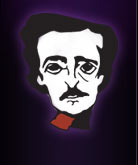MWA #4 — Character
 Continuing my recaps of the Mystery Writers of America University sessions, I’ll talk about character. This session was presented by Laura DiSilverio, who writes the Mall Cop mystery series and the Swift Investigations PI series.
Continuing my recaps of the Mystery Writers of America University sessions, I’ll talk about character. This session was presented by Laura DiSilverio, who writes the Mall Cop mystery series and the Swift Investigations PI series.
Laura’s first point was to make sure to avoid stock or expendable characters. They’re cardboard, and nobody’s going to care about them.
Her next point was that characters come from within you. You have to be willing to find and exploit the emotions you have inside. You don’t have to experience what your character does, but you can draw upon emotions.
To demonstrate this, she asked us to think about a shameful moment in our lives, and then examine our physical reactions. Was it a heart-pounding moment? Skin-crawling?
Next, she had us consider the environment. Hot, cold? Dark, light? Comfortable? Were you alone or in a group?
She suggested that we focus on one area of the environment. Does encountering that environment put you back in the shameful moment. Transfer that feeling to a character in your book.
Character names are important as well. They can give the reader the first indication of the character’s age, ethnicity, economic status, personality, gender, etc. It’s not likely a character named Tiffany was born in 1945. You can use a baby name book or simply do an internet search for popular names of any given year.
You should know what your character looks like, even if you don’t describe him or her on the page. A lot of authors (myself included) prefer to be vague so the reader can envision the character for him or herself. Also, the genre you’re writing can make a difference in how much physical description you give. Usually, you’ll describe the character at his or her first appearance, but you might delay it for effect. She gave an example where one character described her lover in glowing terms, and then tacked on how her parents would see him only by his color. Until then there was no mention of his ethnicity.
She stressed “sprinkling” rather than stopping the action to describe a character. Also, she advised that we use details that tell more about the character than hair and eye color.
If you write 1st person, it’s often difficult to have a character describe herself. Comparisons can work well here—“he was a good six inches taller than my five-foot-three” for example.
Readers should know what characters think. Internal dialog is useful for this. She also warned that actions can be a much stronger means of revealing character, so we should avoid too much thinking. What characters do matters more than anything else in the reader’s perception of them.
The verbs associated with a character will also say a lot. Another thing to think about: are the verbs at the beginning the same as those at the end? If they are, your character probably hasn’t changed much. You need a character arc, which she defined as “the path—usually filled with ups and downs, reversals, dead stops—that a character travels over the course of a book or series to emerge somehow different (usually) at the end.”
Your protagonist shouldn’t be strong enough to defeat the antagonist early on. And if you’re writing a series, you need antagonists that challenge different aspects of your protagonist.
There are some successful series that don’t show a lot of change—she mentioned Janet Evanovich’s Stephanie Plum, and Jessica Fletcher of “Murder, She Wrote.” Whether you’re writing series or stand alone will also affect how much your character grows or changes. Her advice: L eave room to grow. When in doubt, go slowly.
Other characters’ perspectives are also a good way to show character. The reliability of your POV character is important.
You need to know why your character does the job he or she does. Since this was a mystery writers class, DiSilverio’s examples fit the genre. Why is your hero a cop? Or a PI? Or an amateur sleuth? If he’s a cop, is he acting on orders? If he’s a PI, is it for money? And why would your amateur sleuth leave her normal life to solve a crime?
Tomorrow, my guest is Vicky Batman, and her topic is: Movies — Adoration or Addiction?




